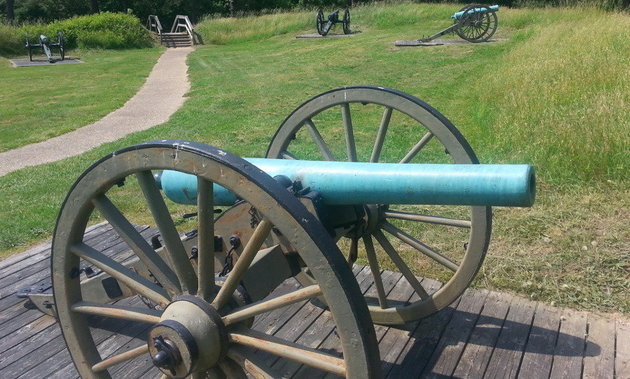
Memorial Day weekend is a time to commemorate men and women who died while serving in the military. People make solemn visits to cemeteries, memorials and battlefields to honor the fallen.
That’s not what took place this week at an important Civil War battlefield in Virginia.
The Petersburg National Battlefield has become an active crime scene after looters dug up a site where more than 1,000 Union and Confederate soldiers died, according to the National Park Service.
“This is an affront to the memory of people who fought and died on this field and it is destruction and theft of history from the American people,” Petersburg National Battlefield Superintendent Lewis Rogers said in a statement. “This kind of aberrant behavior is always disgusting but it is particularly egregious as Memorial Day weekend arrives, a time when we honor the memories of our friends and family.”
An initial assessment of the damage identified “a large number of excavations in the park,” the Park Service announced Friday. Park staff came across excavated pits this week.
“Thieves were likely looking for relics on a field where more than 1,000 Union and Confederate soldiers died fighting during the Siege of Petersburg,” the Park Service said in a news release.
Looters targeted an area the eastern portion of the park, located about 135 miles south of Washington, but the marked graves were not disturbed, CNN reported.
Officials haven’t said what exactly was taken, but they did describe the incident as “looters steal Civil War history.”
“They are probably doing their homework of the area, probably did research on Civil War,” Park Service spokesman Chris Bryce told CNN. “They were in the ground, they likely would have used a metal detector and a digging tool.”
Looting at the site is considered a federal crime. Those charged and convicted of the crime can face a fine of up to $20,000 and two years imprisonment. But, according to the Park Service, just 14 percent of looting cases are solved.
“There’s a market for these items related to the Civil War,” Bryce told the Military Times.
Rogers urged the public to contact park officials with any information, given the battlefield is located in a populated and urban area. “Someone may have seen something we need to know,” he said.
He said the archaeological resources are “a window to our nation’s history,” and that “Historians are still writing history based on” items left behind.
“Removing these artifacts erase any chance for us to learn from our nation’s greatest tragedy,” Rogers said.
The 2,700-acre park includes a collection of sites associated with the nearly 10-month siege of Petersburg, the country’s longest siege and an instrumental event that led to the collapse of Gen. Robert E. Lee’s Confederate forces.
Gen. Ulysses S. Grant failed to capture Richmond from Confederate forces in the spring of 1864. So the Union army surrounded Petersburg, cutting off supply lines into both the town and nearby Richmond.
Numerous battles were fought, and about 70,000 people died throughout the siege, according to the Park Service.
On April 2, 1865, Grant’s army attacked Confederate lines in Petersburg. Within hours, Confederate troops evacuated, and 25 miles away, Richmond fell. A week later, Lee surrendered at Appomattox Court House.
The portion of the Petersburg National Battlefield not targeted by looters remains open to the public.
(c) 2016, The Washington Post · Elahe Izadi


